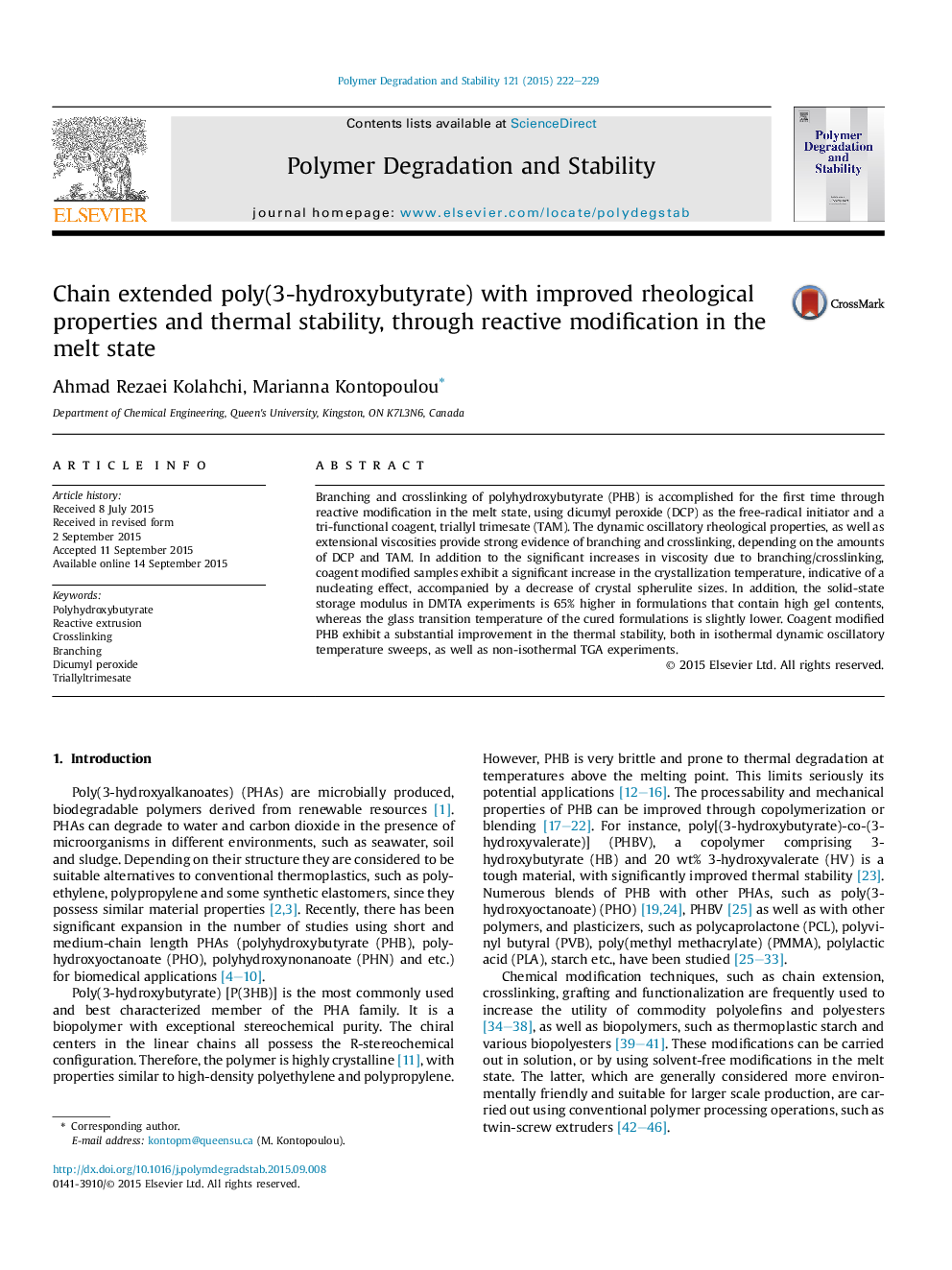| Article ID | Journal | Published Year | Pages | File Type |
|---|---|---|---|---|
| 5201383 | Polymer Degradation and Stability | 2015 | 8 Pages |
Abstract
Branching and crosslinking of polyhydroxybutyrate (PHB) is accomplished for the first time through reactive modification in the melt state, using dicumyl peroxide (DCP) as the free-radical initiator and a tri-functional coagent, triallyl trimesate (TAM). The dynamic oscillatory rheological properties, as well as extensional viscosities provide strong evidence of branching and crosslinking, depending on the amounts of DCP and TAM. In addition to the significant increases in viscosity due to branching/crosslinking, coagent modified samples exhibit a significant increase in the crystallization temperature, indicative of a nucleating effect, accompanied by a decrease of crystal spherulite sizes. In addition, the solid-state storage modulus in DMTA experiments is 65% higher in formulations that contain high gel contents, whereas the glass transition temperature of the cured formulations is slightly lower. Coagent modified PHB exhibit a substantial improvement in the thermal stability, both in isothermal dynamic oscillatory temperature sweeps, as well as non-isothermal TGA experiments.
Related Topics
Physical Sciences and Engineering
Chemistry
Organic Chemistry
Authors
Ahmad Rezaei Kolahchi, Marianna Kontopoulou,
